The Samsung Galaxy Note 20 line has been unveiled, and consumers have two choices: the baseline Galaxy Note 20 versus the top-specced (and top-priced) Galaxy Note 20 Ultra. So what’s the difference?
This simplifies things a bit, as either Note 20 option caters to a more specific consumer demographic than the three-phone Galaxy S20 line. Do you want a stylus-packing handset and won’t miss a few features to ensure a cheaper price? Go for the standard Note 20. Do you want an absolute top-of-the-line device with the best appearance? Pick up the Note 20 Ultra.
But it’s worth discretely comparing both options to understand what you’re giving up in the Note 20 and what you’re paying extra to get in the Note 20 Ultra.
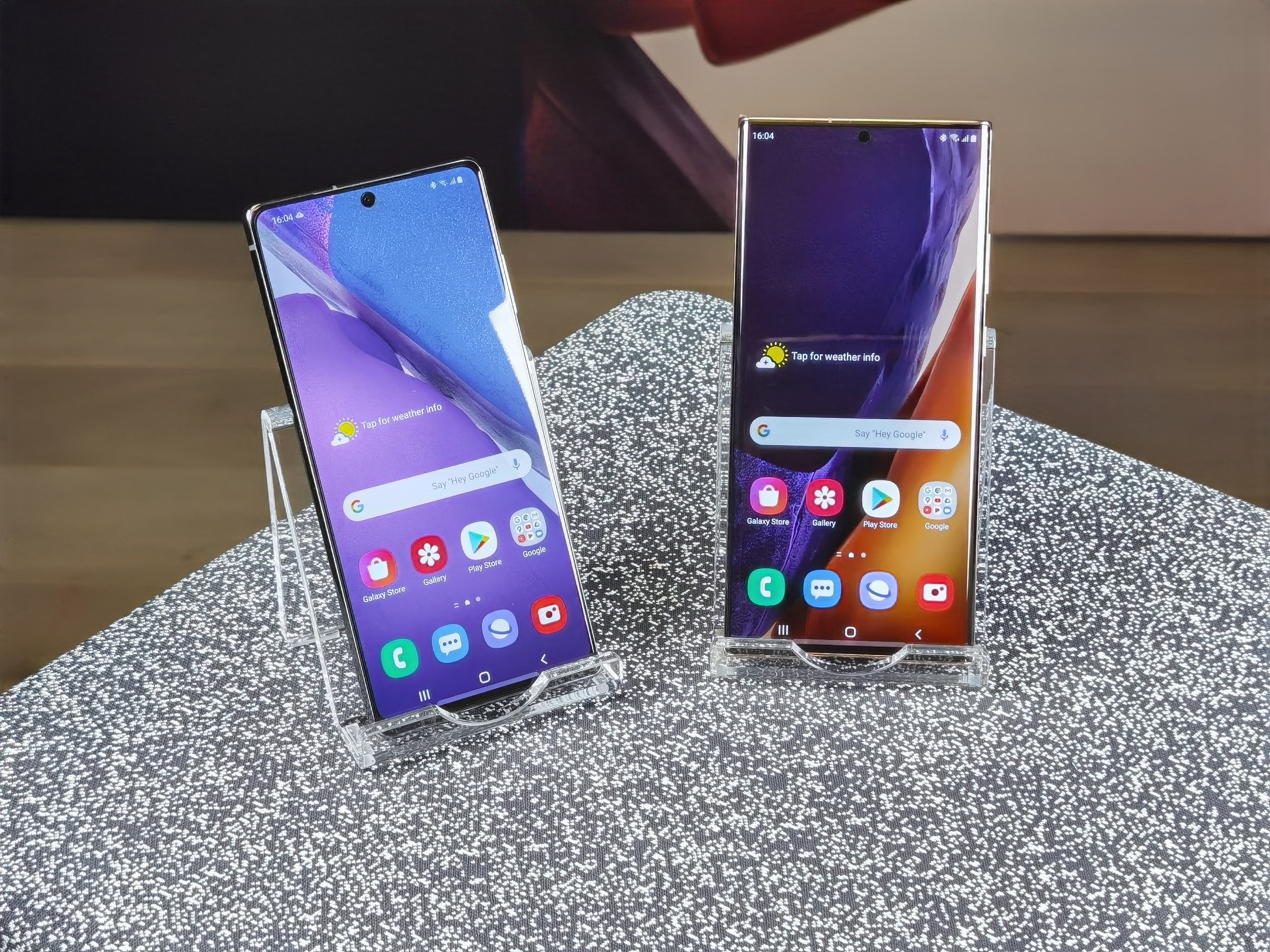
Samsung Galaxy Note 20 Ultra vs Galaxy Note 20 price and release date
Both the Note 20 and the Note 20 Ultra were announced on August 5, 2020, and will be available around the world on August 21.
The 5G Note 20 starts at £949 / AU$1,649 in the UK and Australia with 256GB of storage, while the baseline version in the US costs $999 and packs 128GB of space. The Note 20 is also available in a 4G-only version for £849 / AU$1,499, but will only be sold in the UK and Australia.
As the lower-cost model, the Note 20 gets the more fun colors, including the experimental flagship hue of this cycle, Mystic Bronze, along with Mystic Green and Mystic Grey.
The 5G Note 20 Ultra is notably pricier, starting at $1,299 / £1,179 / AU$1,849 for the baseline model – which gets you 128GB of storage in the US and 256GB of storage in the UK and Australia (and 12GB of RAM in all regions). Bumping the space to 512GB ups the price to $1,449 / £1,279 / AU$2,199. Finally, Australians have the option of buying a cheaper 4G-only option for AU$1,849, but that model isn’t available elsewhere.
The Note 20 Ultra comes in a more premium color set of Mystic Bronze, Mystic Black and Mystic White.
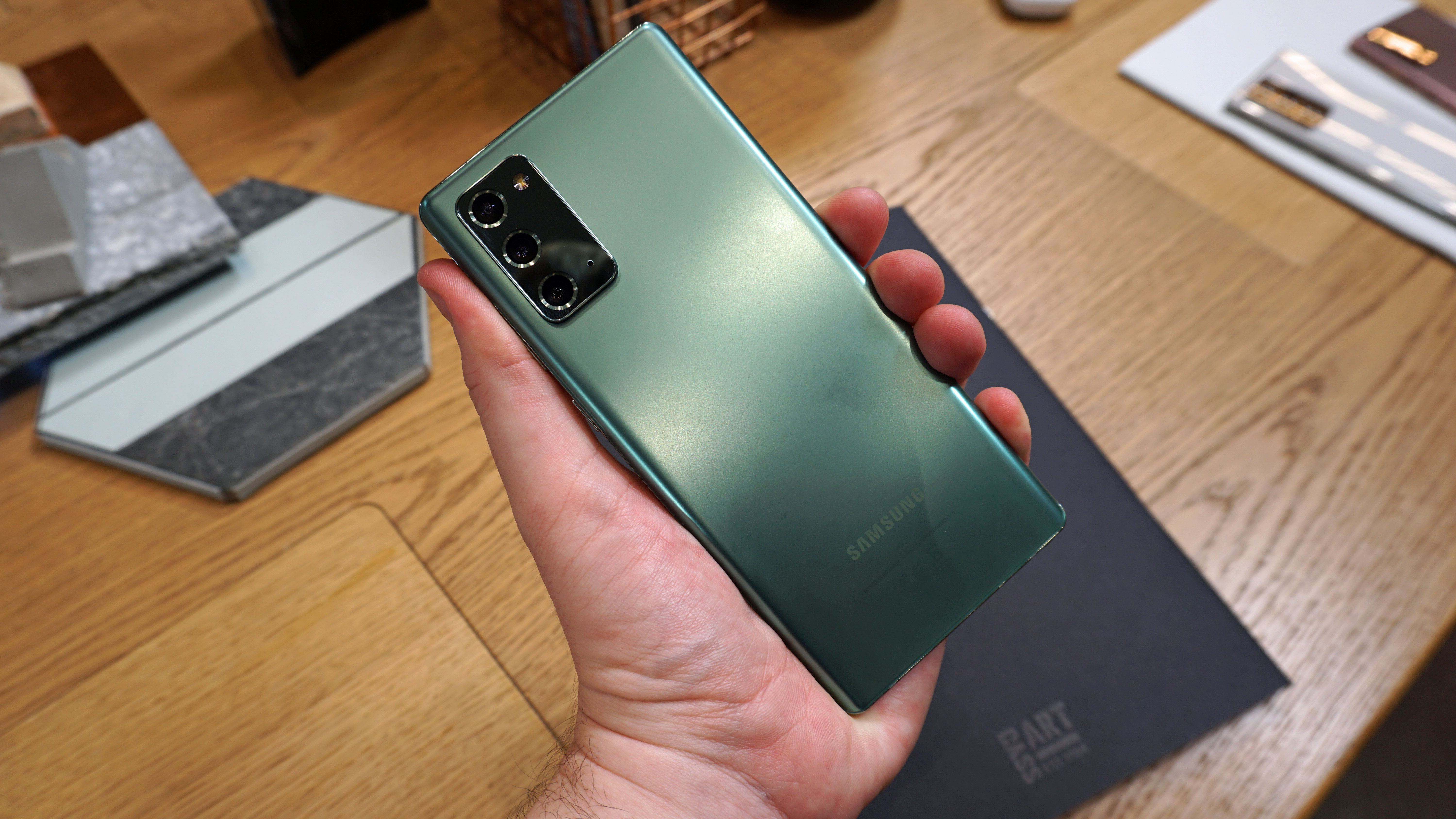
Samsung Galaxy Note 20 Ultra vs Galaxy Note 20 design
The Note 20 and Note 20 Ultra may look very similar, but they surprisingly diverge in material quality.
The base Note 20, for instance, has a flat front display and a polycarbonate back cover, making it the first flagship in years that lacks a glass rear. The material has a brushed effect, which Samsung calls ‘glasstic,’ which gives it a ceramic feel.
The Note 20 Ultra is glass front-and-back, with the curved ‘Infinity’ display that’s characteristic of Samsung flagships. It’s the larger of the two phones by a few millimeters in length and width, nearly matching the older Note 10 Plus in size, with a colossal 6.9-inch display. The phone is just a hair shorter and thinner than the S20 Ultra.
In both models, the S Pen has been moved to the left side of the bottom edge, but pops out in the usual manner. The pen has improved latency from 45ms in the Note 10 down to 9ms in the Note 20 phones.
The USB-C port is in the center of the bottom edge of both phones, with a speaker on the left side and microphone on the right.
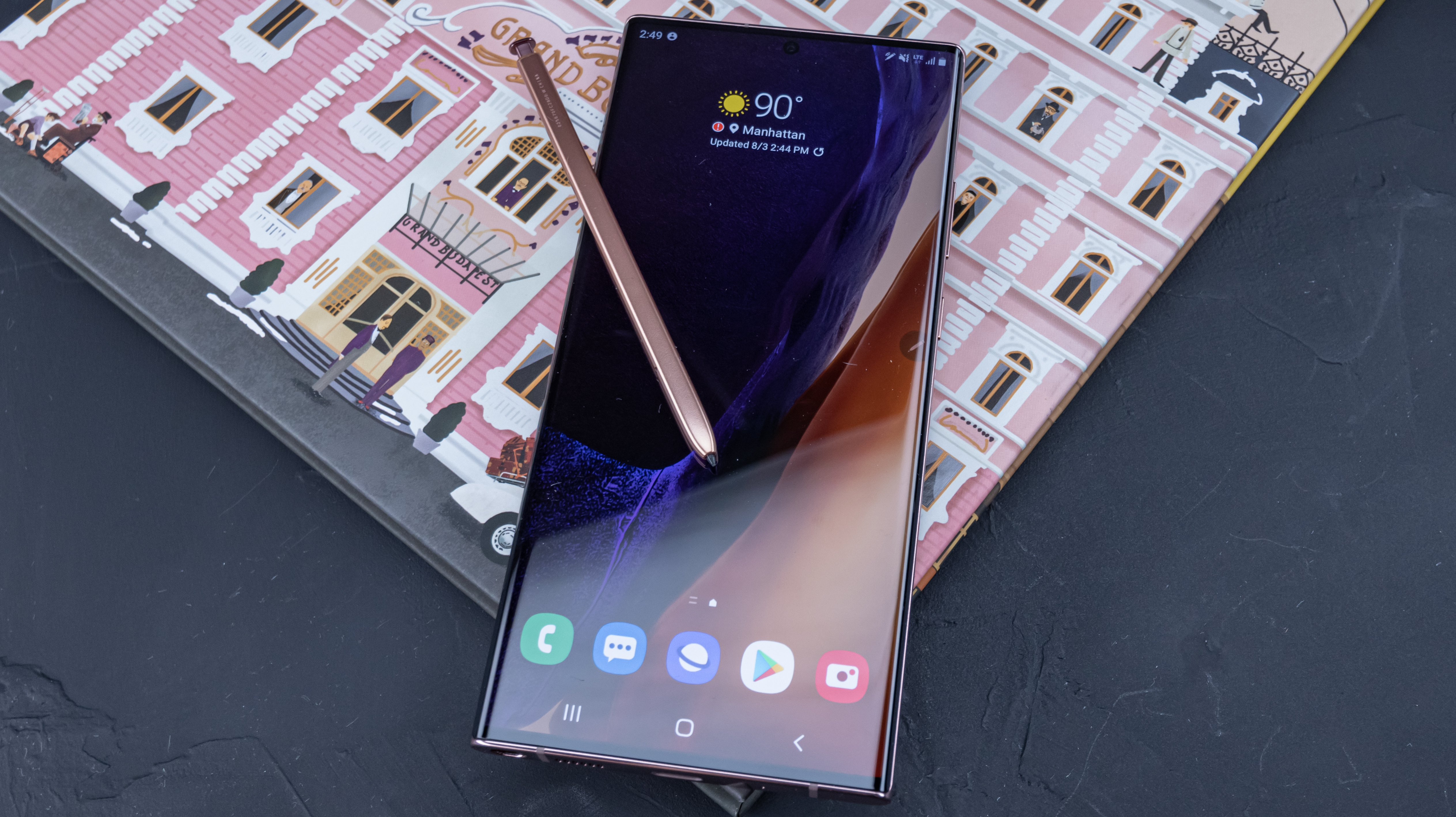
Samsung Galaxy Note 20 Ultra vs Galaxy Note 20 display
Given that both phones diverge in build quality, it’s not surprising that the displays differ, too.
The Note 20’s 6.7-inch display is only Full HD (2400 x 1080), which shouldn’t surprise anyone – we saw the same corner-cutting when Samsung dropped the resolution on the base Galaxy Note 10 model. The screen also has a maximum 60Hz refresh rate, which is lower than most other flagship phones on the market but the iPhone 11 Pro series.
Samsung saved the prestige touches for the Note 20 Ultra, but they’re essentially the same as those on the Note 10 Plus, save for a 0.1-inch increase for a WQHD Plus resolution (3088 x 1440).
This makes it a slightly odd 19.3:9 ratio, unlike its predecessor’s 19:9 format. The Note 20 Ultra does pack a 120Hz refresh rate display, which is an upgrade on the Note 10 Plus.
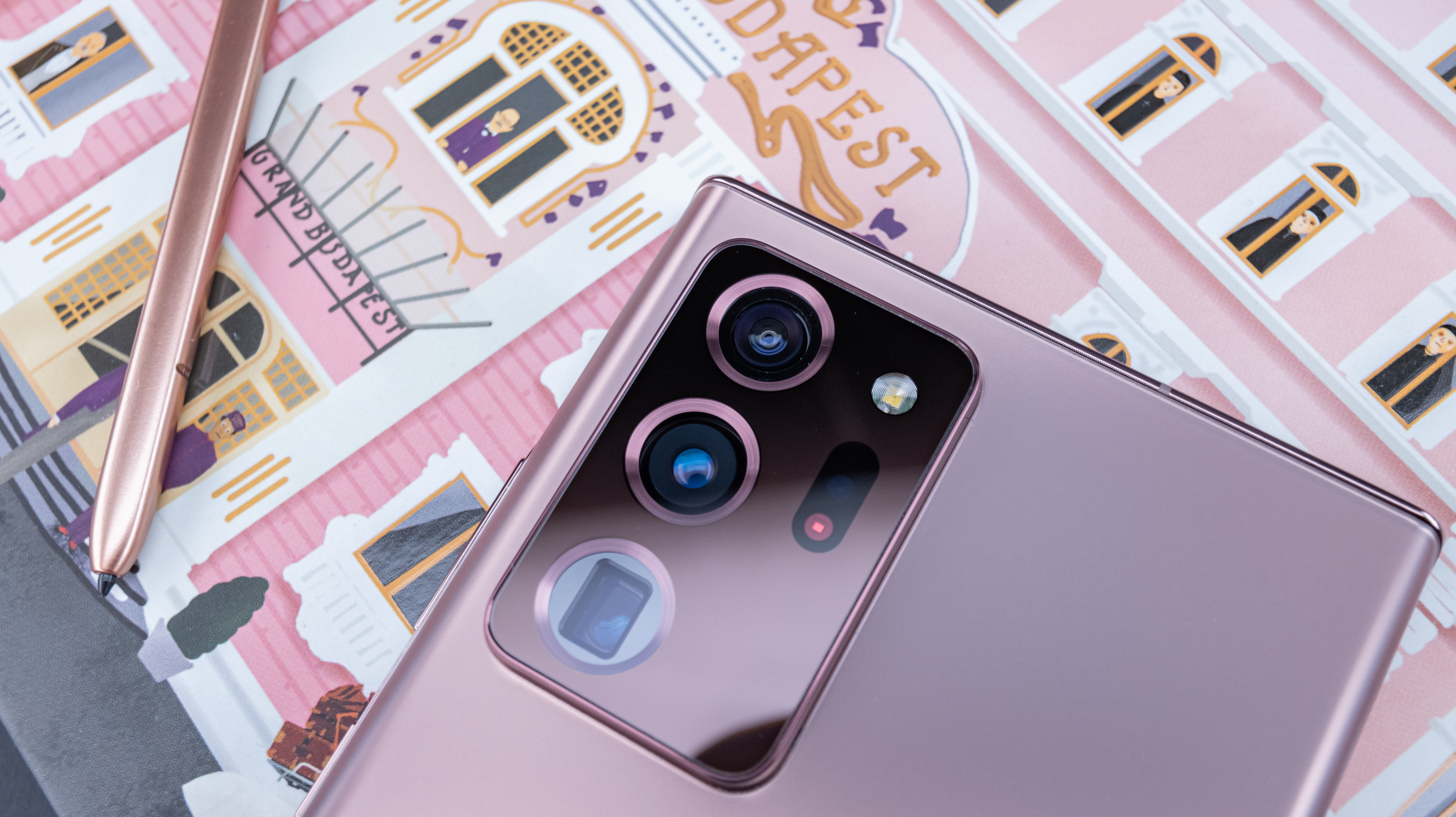
Samsung Galaxy Note 20 Ultra vs Galaxy Note 20 cameras
The differences between the Note 20 and Note 20 Ultra’s camera arrays match those on the Galaxy S20 and Galaxy S20 Ultra, respectively, at least in megapixel count. There are a few differences and improvements.
The baseline Note 20 packs a 12MP main shooter with a 1/1.76-inch sensor size, a 64MP telephoto lens with a 3x hybrid optical zoom that reaches a maximum 30x digital zoom, and a 12MP ultrawide camera. There’s also a front-facing 10MP camera located in a centered punch-hole at the top end of the display. Again, these cameras aren’t much different than those in the Galaxy S20.
Likewise, the Note 20 Ultra inherits the S20 Ultra’s photo hardware: a 108MP main shooter with a 1/1.33-inch sensor size, a 12MP periscope telephoto lens with 5x optical zoom, and a 12MP ultrawide camera. It also has a 10MP front-facing camera.
The Note 20 Ultra phone has two big differences from the previous Ultra phone – first, that its digital zoom only goes up to 50x, which isn’t a huge loss as we weren’t using the S20 Ultra’s 100x ‘Space Zoom’ at its blurry maximum anyway, and a new laser autofocus that Samsung claims allows the camera to swiftly switch focus between depth levels.
Both phones shoot 8K video at 24fps, as did the S20 line – but now they can shoot it in 16:9 or a more cinematic 21:9 format.
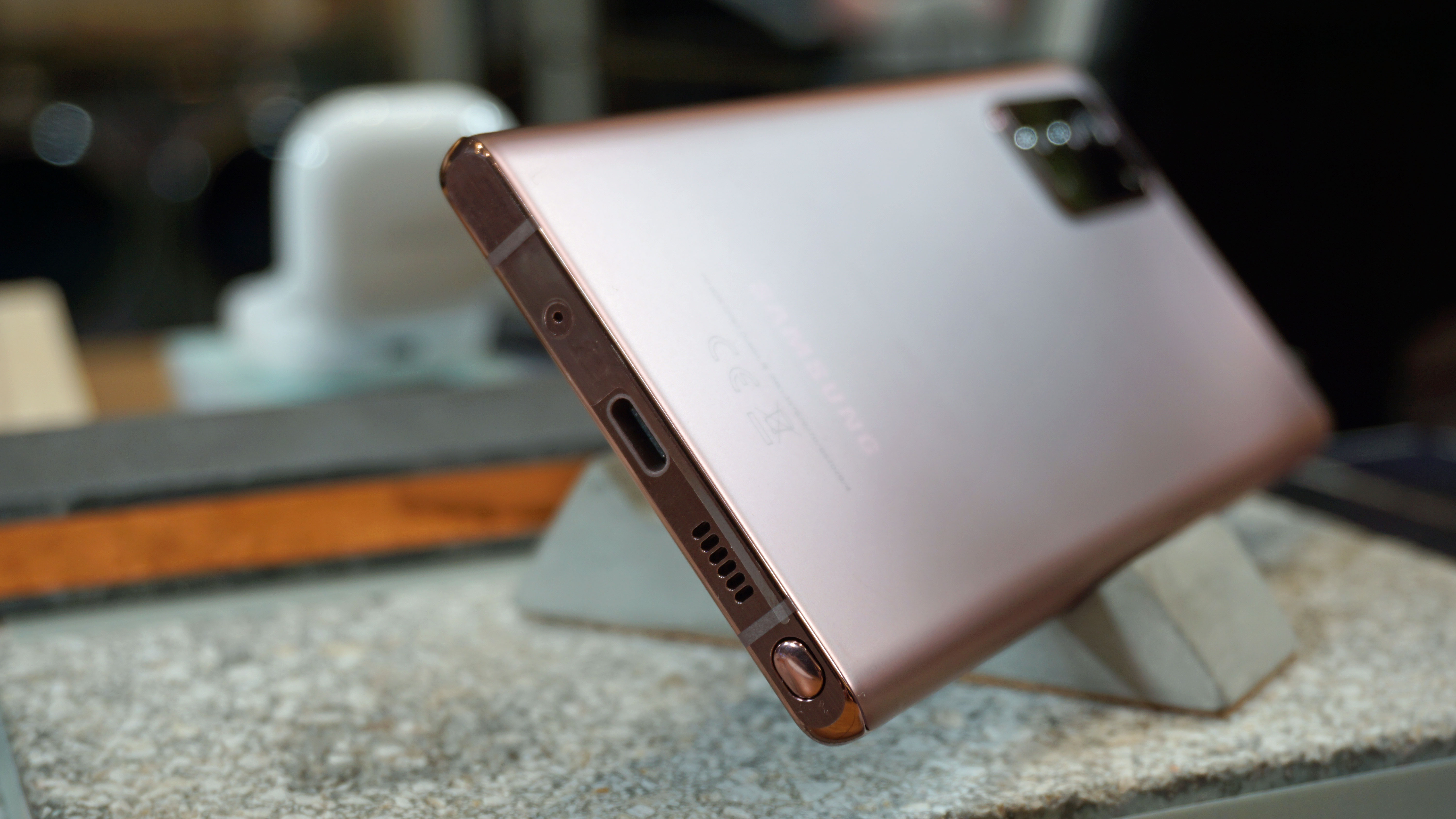
Samsung Galaxy Note 20 Ultra vs. Galaxy Note 20 performance and battery
Both phones pack the same Qualcomm Snapdragon 865 Plus chipset in the US or Exynos 990 chipset elsewhere.
The difference lies in RAM and storage: the Note 20 has 8GB of RAM and only comes in one storage configuration per region (128GB in the US, 256GB in the UK and Australia) that is not expandable – like the Note 10, it doesn’t have a microSD slot.
The S20 Ultra has 12GB of RAM and a similar region-different baseline storage level (128GB in the US, 256GB in the UK and Australia), along with an option for 512GB at a higher price. But unlike the standard Note 20, the Ultra storage is expandable via microSD.
Both phones run Android 10 out of the box and Samsung’s OneUI, which is expected to get an upgrade alongside Android 11 when that’s released later this year. In most regions, only the 5G-capable versions of both phones are on sale – and thankfully, they connect to a variety of 5G frequency ranges, including mmWave and sub-6.
Battery is another divide between the phones, but not by much, with the Note 20 packing 4,300mAh capacity and the Note 20 Ultra having 4,500mAh. Curiously, both phones max out at 25W charging speeds, though they also have wireless charging and wireless power share.
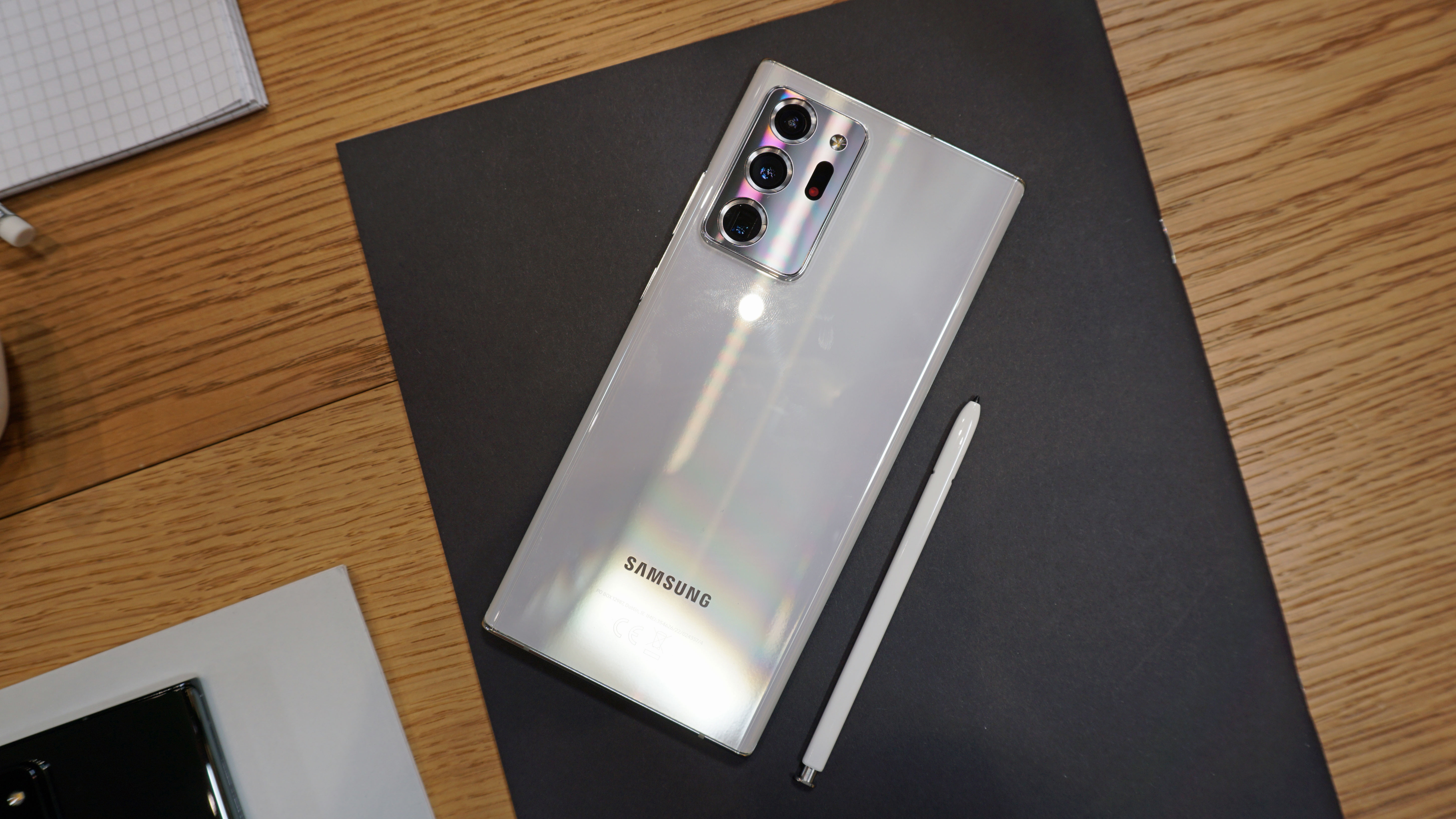
Takeaway
The Note 20 and Note 20 Ultra are different enough in their features and offerings to appeal to different consumer niches.
Those who are willing to forgo some flagship creature comforts like 120Hz display will find the Note 20 suitable, with all the same S Pen stylus features as the phone’s pricier sibling. While the phone is more affordable 5G than its pricier sibling, Samsung cut some surprising corners to get the cost down, including the plastic back and lack of microSD slot – features appearing in nearly all mid-range Android phones.
Consumers who want the absolute best, and are willing to pay for it, will get a handful of premium touches like extra RAM, a curved waterfall display, and other perks. We’re especially excited about the laser focus fixture on the main camera, which could seriously help casual photography.
In other words, your decision will probably come down to cost rather than feature set – and thankfully, the most important perks of the Note 20 Ultra are preserved in the standard Note 20. If you’ve been waiting for the next generation of stylus flagship phones, you’ve got two strong options to choose from.
- Stay on the cutting edge of tech with the TechRadar newsletter
from TechRadar - All the latest technology news https://ift.tt/33Askl3


